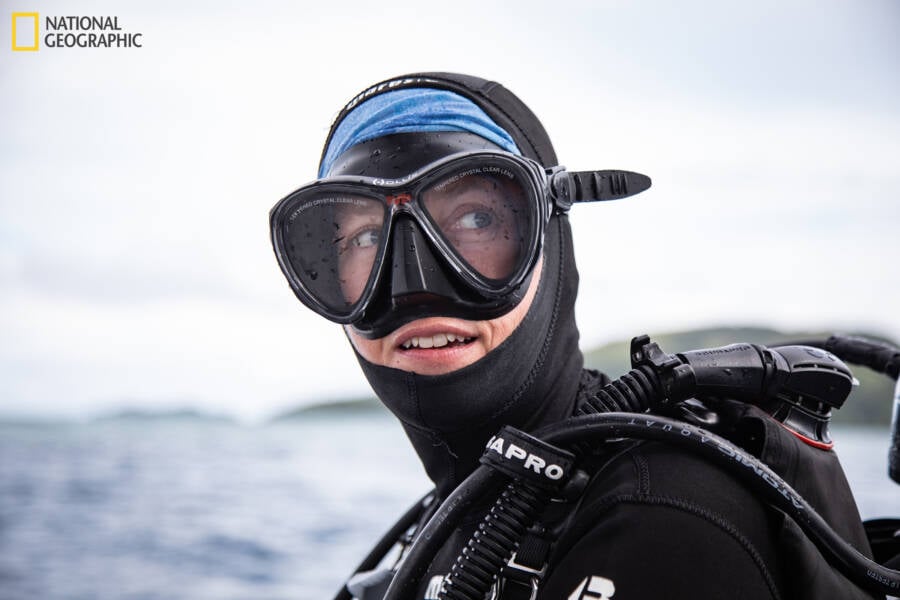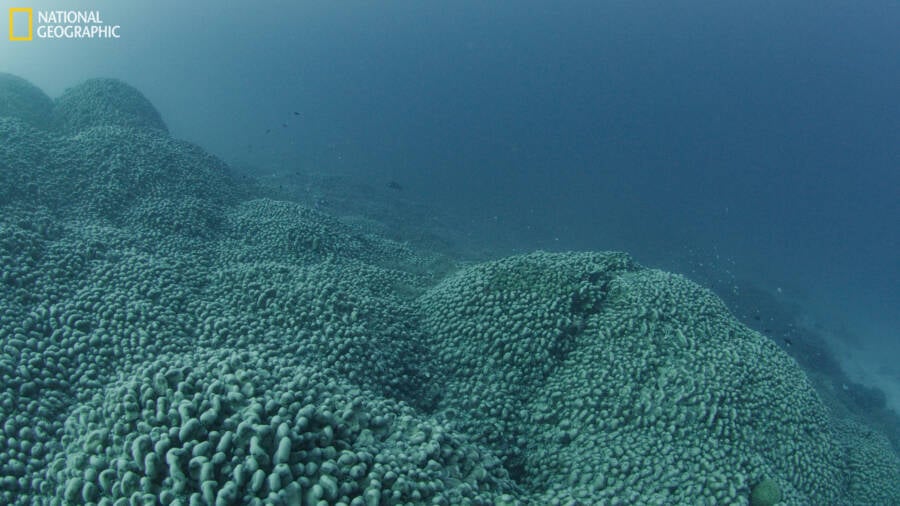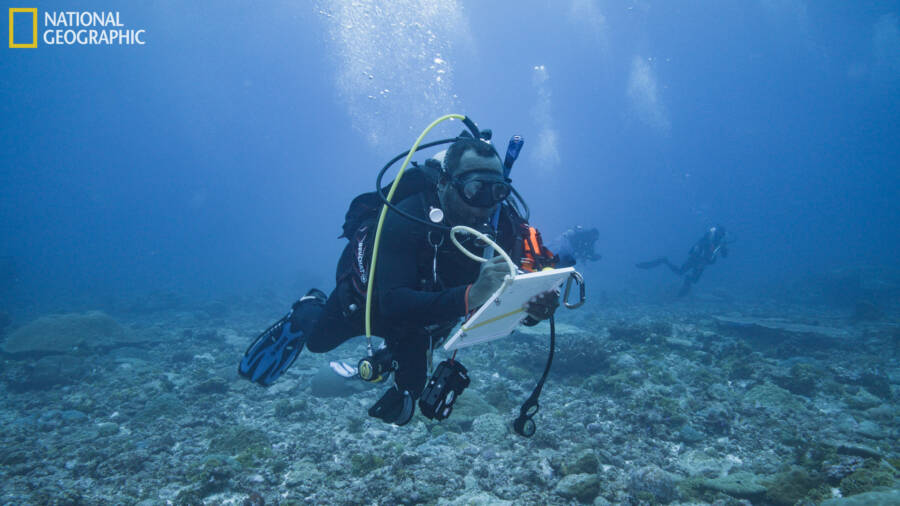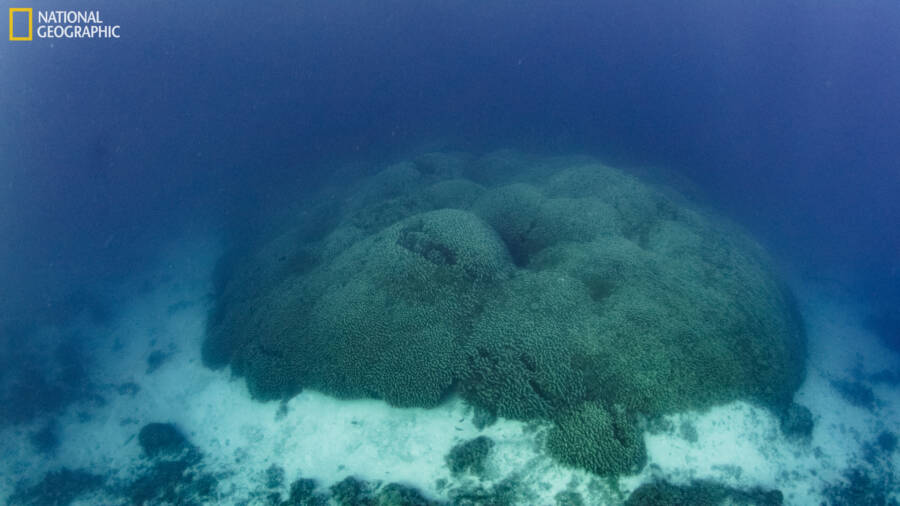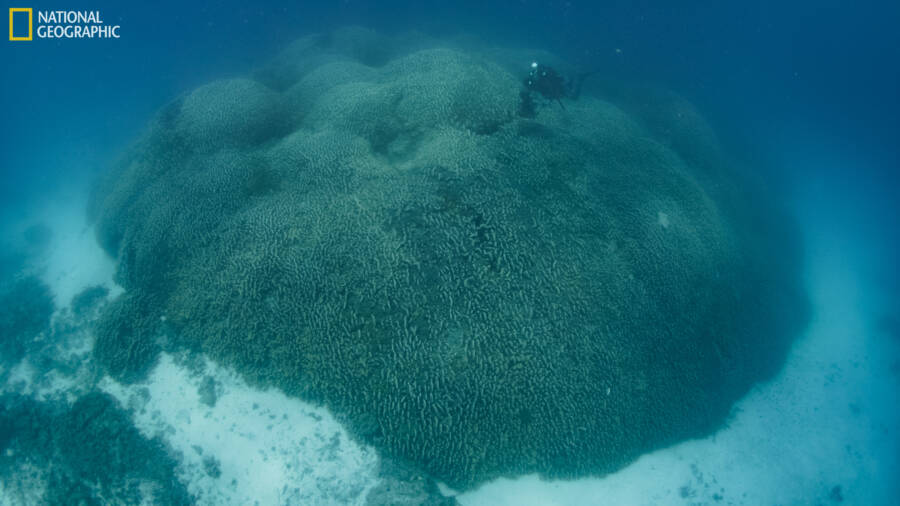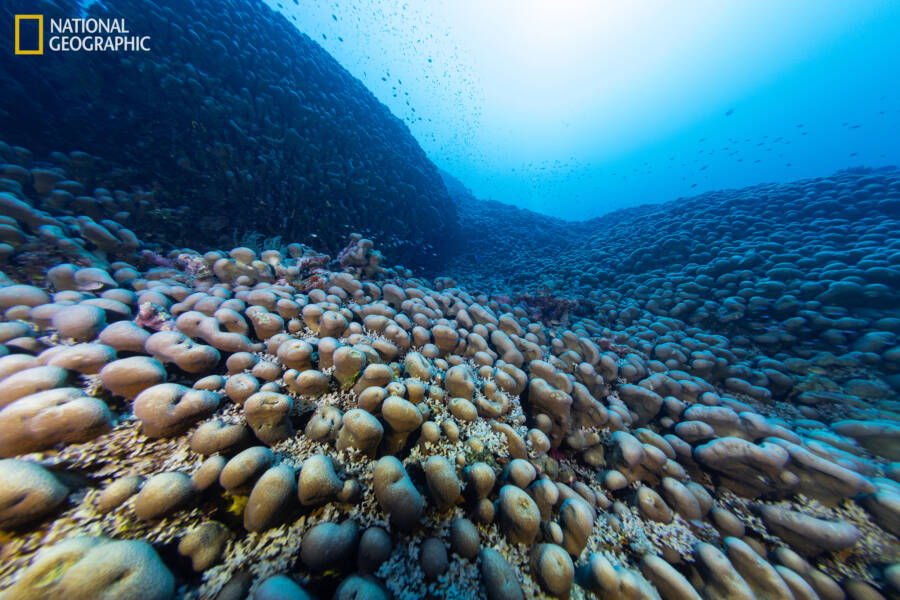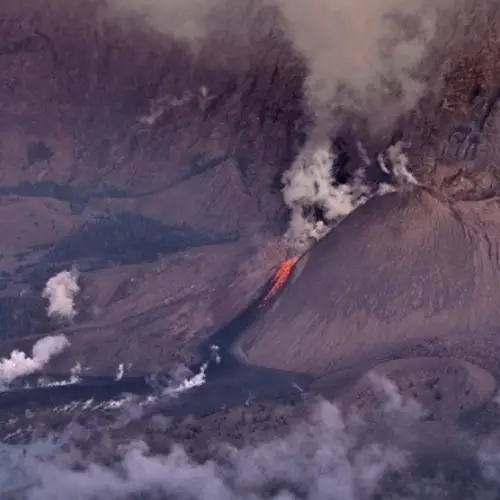Measuring 111 feet wide, 104 feet long, and 15 feet high, the biggest coral in the world is three times the size of the previous record-holder.

Manu San Félix, National Geographic Pristine SeasThe newly-discovered largest coral in the world is mostly brown, but also contains shades of red, pink, and yellow.
At first, the marine ecologists surveying the waters near the Solomon Islands thought they’d found a shipwreck. Then they realized that the hulking shape beneath the water was something much more significant — a sprawling coral colony that they say is the largest ever found.
In fact, this coral is so big that it’s visible from space. However, scientists warn that the world’s largest coral is currently in danger due to climate change and other threats posed by humans.
The Discovery Of The World’s Largest Coral Off The Coast Of The Solomon Islands
The discovery of the world's largest known coral came about almost by accident. It was detected in October 2024 during an expedition by National Geographic Society's Pristine Seas team — who initially dismissed the enormous mass in the waters below as a shipwreck or a boulder.
On the night before the team moved on to another section, they decided to take a closer look. Cinematographer Manu San Félix dove down 42 feet to investigate and was stunned to find a sprawling coral field of browns, reds, pinks, and yellows. At 111 by 104 feet, it is the largest coral ever found.
The previous record holder, a coral known as "Big Momma" in American Samoa, is three times smaller than the coral found off the Solomon Islands.

Alex DeCiccio/Wikimedia CommonsA coastline in the Solomon Islands, a country made up of hundreds of islands that sit 1,200 miles northeast of Australia.
"Just when we think there is nothing left to discover on planet earth, we find a massive coral made of nearly one billion little polyps, pulsing with life and color," Enric Sala, National Geographic Explorer in Residence and founder of Pristine Seas, remarked in a National Geographic press release.
Even though this coral is so large that it's bigger than a blue whale, no one had ever detected it before. Because local communities don't have scuba gear, it's possible that they had long dismissed it as a large rock.
This extraordinary coral is made up of a billion genetically identical coral polyps that grew from larvae on the seabed and exist as one singular organism.
The colony consists of a hard coral known as Pavona clavus, or "shoulder blade coral" because of its shape. Based on the size of the colony — scientists use a coral's height to determine its age, and this one is 16 feet high — the Solomon Islands coral appears to be between 300 and 500 years old.
The Threats That The Biggest Coral On Earth Now Faces
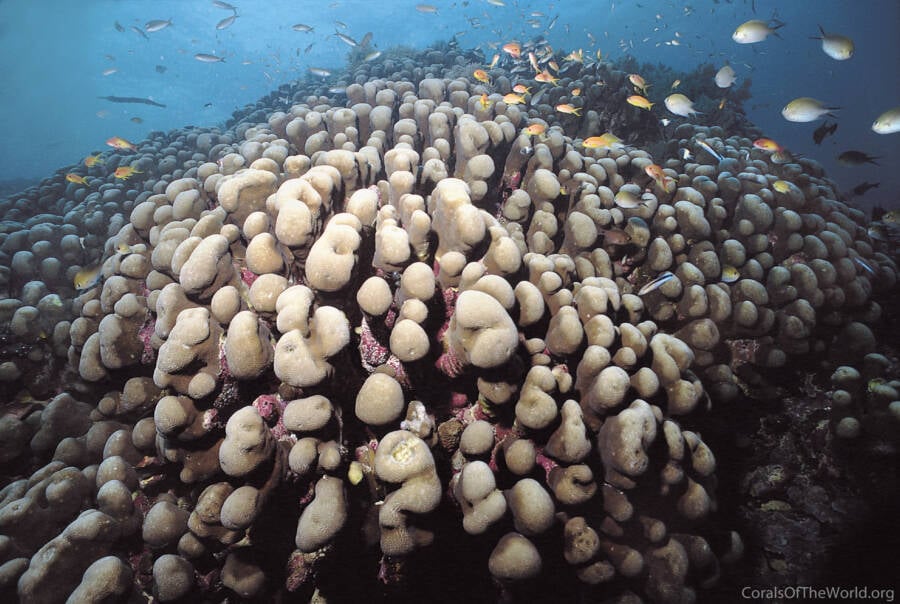
Charlie Veron/Corals of the WorldAn example of Pavona clavus coral from another coral colony.
But despite its size and age, scientists warn that the largest coral on Earth still faces the same threats as coral elsewhere in the world. Coral is very sensitive, and can be adversely impacted by climate change, pollution, ocean acidification, and overfishing. High water temperatures can cause coral bleaching, which can in turn make coral more vulnerable to disease.
For now, however, the Solomon Islands coral seems healthy and resilient. Scientists with National Geographic suspect that this may because of its advantageous location in cool, deep waters.
Moreover, perhaps, it stands as a stunning discovery in a world where it can feel like everything has already been found.
"Finding this mega coral is like discovering the tallest tree on earth," Sala exclaimed to National Geographic. "This discovery rekindles our sense of awe and wonder about the ocean."
After reading about the largest coral ever discovered, delve into the strange story of Coral Castle, the sprawling Florida structure built with more than 1,000 tons of coral. Then, learn the tragic story of Tom and Eileen Lonergan, the American couple who disappeared in 1998 while scuba diving in the Coral Sea.
